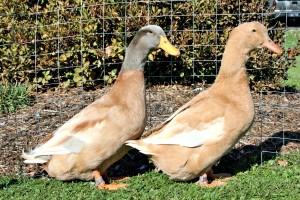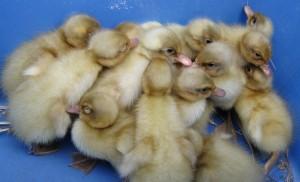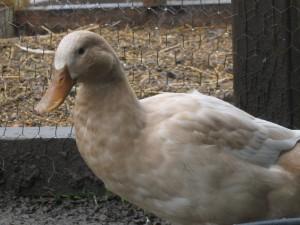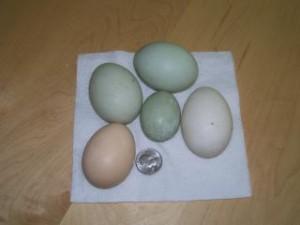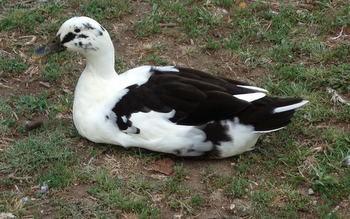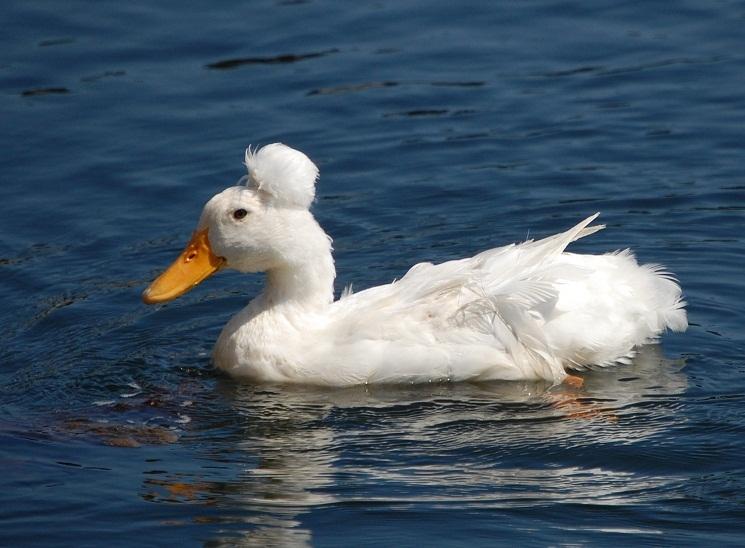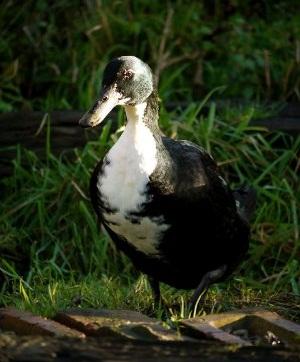Buff (Orpington) Duck
The Buff Duck (also known as the ‘Orpington Duck’), is a breed of hardy, docile ducks that are fairly easy to breed and care for. Apart from poultry, these colorful birds are also kept as pets. They like swimming, but would be happy as long as they are provided with splashing water. Because of their limited flying ability, a low fence shelter is enough to fit them in.
| Other Names | Buff Orpington Duck |
| Characteristics | Small to medium stature, strong legs; males are a little larger with the head slightly darker in shade. Short wings, long, well-curled tail; strong and straight bill – male beaks are yellow and female brownish orange |
| Personality Traits | Gentle behavior; adaptable to flocks of any size; pleasant temperament; robust and active |
| Plumage | Primarily buff with some white and light-colored pin feathers; also brown, blond; color blue extremely rare or has gone extinct |
| Purposes | Eggs, meat, as pet |
| Clutch Size | 5-14 |
| Eggs | Large; white, off white, light gray; 150-200 each year |
| Incubation Period | 28 days |
| Lifespan/Expectancy | 8 to 12 years (as pets) |
| Weight | Drake: 2.2 – 3.4 kg Hen:2.2 – 3.2 kg |
| Height (size) | 23 inches approx. |
| Diet | Insects and larvae, aquatic invertebrates, seeds, acorns, aquatic vegetation, grain; need to have regular access to clean water |
| Country of Origin | England/UK (Orpington, Kent) |
History and Development
The buff ducks are a result of a cross between Indian Runner, Rouen and Aylesbury ducks. They are also called Orpington ducks because of their origin from the famous Orpington Farms in England. A man named W. Cook from the same place developed the breed for producing its buff colored plumage, popular at the time. Cook also developed the black, chocolate and blue variations with white heart-shaped bibs on their chests. In 1908, Cook introduced them to the US at the Madison Square Garden Show in NYC, where they were recognized by the American Poultry Associations in 1914.
As of 2011, there had been 793 breeding Buff ducks found in North America, with 11 breeders reported to be breeding them. Currently, there are 5 primary breeding flocks with 50 or more breeding birds.
Meat
Their meat is considered tasty and of high quality. Unlike many breeds, their light-colored pin feathers do not leave a dark trace on the carcass, when plucked. This makes them very nice looking meat birds upon processing. Unlike the pekin ducks, the buck ducks take a relatively longer time to grow. They can be ready for market in 8-10 weeks.
Interesting Facts
- The status of these ducks in USA is ‘threatened’.
- Their typical buff has been recognized as the standard color.


